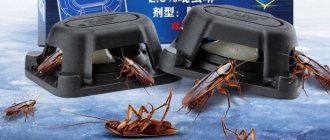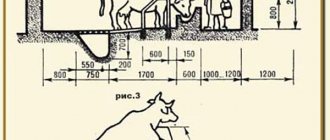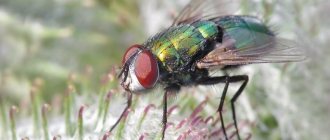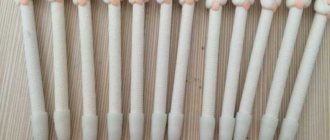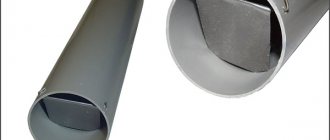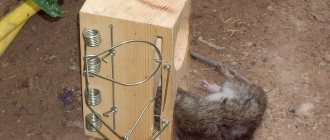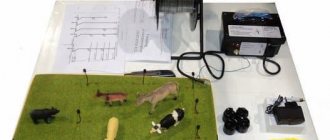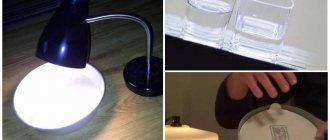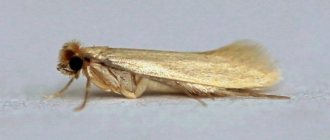In the summer, mosquitoes bother you on the street and sneak into rooms, so you can’t do without means of protection against annoying blood-sucking carriers of infections. An interesting solution for protection could be a homemade fly and mosquito trap. Many varieties of such homemade products have been invented, but according to the principle of operation they are conventionally divided into the following groups:
- devices for mechanically catching mosquitoes in a vessel;
- adhesive catching surfaces;
- electric traps and mosquito repellers.
We suggest you familiarize yourself with some easy-to-use homemade mosquito traps in this article.
How are mosquitoes attracted?
Different models use different methods to attract pests.
They can be combined - one device will attract mosquitoes with several things, which is more effective. There are the following attraction factors: 1. Ultraviolet light. It is created by the corresponding lamp. The most effective alluring factor, but its effectiveness decreases during daylight hours. This light attracts insects because they see in the ultraviolet spectrum, unlike humans. For pests, this glow looks like a flame of fire.
2. Carbon dioxide. It is created as a result of photocatalysis when ultraviolet light hits a special plate. There are also models that require connection to a gas cylinder. Under any circumstances, this simulates human breathing. The effectiveness of a carbon dioxide mosquito trap depends in part on the direction of the wind.
3. Heating of the device. It is ensured by the operation of an ultraviolet lamp and other electronic components of the traps. Particularly effective in attracting mosquitoes. Between two victims, these insects will definitely stop at the one with the higher body temperature to bite. Mosquitoes instinctively understand that since one body is warmer, it means that the vessels are located relatively close to the surface of the skin, and this guarantees a sufficient amount of nutritious blood.
4. Special attractant. This is a substance whose odor is pleasant to mosquitoes, although humans hardly smell it. "Octenol", "Nonanal" and similar solutions can be used. They are filled into the cartridge of the device and gradually evaporate, which causes the spread of an attractive odor.
Help-characteristics: what is a mosquito?
It is a well-known fact that male mosquitoes do not feed on blood. Their jaw apparatus is not adapted to such a process, therefore they feed exclusively on the juice and nectar of plants. With its buzzing above the ear, it puts us into a state of “mill” (waving its arms), namely the female. Why, why does she need this? Everything is extremely simple - saturation with blood, and therefore protein, is necessary for fertilized females to be able to lay eggs from which larvae hatch.
The larvae spend their development time in the waters of the reservoir, where they reach “coming of age,” and only the adult individual, the imago, leaves the water element. The process lasts only a week to a week and a half, and the next “horde” of mosquitoes is ready to attack human habitation or vacationers on the shore.
The female's jaw apparatus is capable of cutting through the skin and piercing the proboscis to the depth of the first blood capillary that comes across. Unfortunately, not only ordinary mosquitoes can harm humans with their bite. In many areas of the Earth, including in Russia, malaria mosquitoes live. They are carriers of serious diseases that kill more than a million children every year.
How are they destroyed?
This is possible in the following ways:
1. Electric discharge. During flight, pests come into contact with a metal element to which voltage is applied. It will kill any flying insect
2. Air trap. Mosquitoes are sucked into a reservoir from which they are unable to escape. Their death is caused by the lack of water for 10 hours.
3. Glue trap. Insects get stuck on the surface of the plate on which the adhesive is applied. They die due to lack of water.
Each device uses only one method of killing animals. This ensures that you can buy a mosquito trap to install in almost any location. It is only important to consider whether the electronic filling is protected from water ingress
Reviews
Users of homemade traps have tried several different product designs in real-life situations. The bottle with bait consisting of a mixture of sugar, yeast and water received the most positive feedback.
Glue-based traps were less effective because they did not attract blood-sucking insects. However, the parasites that got into the adhesive substance could no longer get out of there.
Few people decided to make technological versions of mosquito exterminators due to the complexity of the design and the need for basic knowledge of electrical engineering. At the same time, the finished products showed high efficiency, comparable to the simultaneous action of several types of simple traps.
Peculiarities
A mosquito trap can be made from a plastic bottle. It works due to the fact that insects flock to the carbon dioxide released by the fermentation of baker's yeast (but there is also a yeast-free option). Carbon dioxide is exhaled by animals and people, which is why they attract mosquitoes. But it is possible to create an alternative source of carbon dioxide by deceiving dipterans.
By the way, about why mosquitoes fly to people. They are attracted not only by the carbon dioxide released, but also by the heat. They also focus on moving objects. When a mosquito flies by and a person hears its buzzing, he hears the sound of the insect's wings - they work so quickly.
There is an opinion that the buzzing of wings is an attractive moment for individuals of the opposite sex, but for humans it only irritates them.
When a mosquito lands on a person's skin, it gently taps it with its proboscis. True, if the proboscis is examined under a microscope, it rather resembles a stigma. Raising its hairy lip, the insect carefully plunges a stiletto, hollow inside, into human skin. He uses it to feel small capillaries and suck out blood, which lasts less than a minute. But first it releases a substance into the blood that prevents it from clotting. Interestingly, he is able to swallow an amount of blood that is 4 times larger than himself.
A person doesn’t even feel the first bite in his life, but then the body reacts to the proteins of the mosquito, which it releases along with a special substance into the blood. The bite site will itch and swell. And to prevent this from happening, you just need to prevent mosquitoes from getting close to people.
Homemade devices help reorient the insect. When yeast ferments, sugar becomes alcohol and releases carbon dioxide, which is a strong attraction for mosquitoes. The bait works in nature and is considered quite effective. There are several ways to make it, but all require the simplest plastic bottle.
Method 2. Trap with vegetable oil
Perhaps this is the simplest homemade trap - an option for those who have absolutely no time, but really want to get rid of mosquitoes.
You will need:
- Plastic bottles - 3-4 pieces;
- Vegetable oil – 4 tbsp. spoons;
- Scissors.
Manufacturing process:
- Cut off the tops of the bottles just below the neck.
- Lubricate large parts inside generously with sunflower oil.
- Place baits in places where mosquitoes accumulate or make holes in the sides, thread ropes through them and hang them indoors.
What are the benefits for the user?
The mosquito trap is notable for the following advantages:
1.Affects all flying insects. This is due to attraction factors. They are attractive to both mosquitoes and flies or wasps. The animal is not able to resist the instincts that inevitably lead it to ultraviolet light (a warm device, carbon dioxide or a pleasant-smelling attractant).
2. Requires almost no user effort. So, you can make a mosquito trap with your own hands - if you do the job correctly, you will get an effective remedy against bloodsuckers. However, this requires spending time and money on materials. The electronic product saves your time, as it requires minimal maintenance and is ready to eliminate flying insects right out of the box.
Popular devices for catching and killing mosquitoes
There are several devices that have become very popular among analogues due to their efficiency and ease of use. These include:
- Skat-23;
- Insect killer 14044 er;
- MT 64;
- laser gun.
Device for getting rid of insects Skat-23
SKAT-23 is a Russian-made device. Suitable for outdoor use. The device is equipped with two powerful ultraviolet lamps with a low thermal potential, which is enough to attract mosquitoes. As a bonus, there is a energized metal mesh, touching which the insects die. The impact area of the device is 60 square meters. meters, the device is completely safe for people and does not make any sounds.
Insect killer 14044 er - mosquito killer
Insect killer 14044er is a device made in the USA from Flowtron. Equipped with an ultraviolet lamp that attracts insects with light. It is enough for mosquitoes to fly up to the trap, and they die from a discharge of current passing through the metal grate. As an additional bait, a special composition Octenol is used, which resembles human sweat secretions. As a result, insects flock to such bait more actively. The device is completely safe for people and does not emit toxic substances.
MT 64 for insect protection
MT 64 is a Chinese-made device. Attracts mosquitoes with the heat and carbon dioxide released. The manufacturer recommends continuous operation of the device for 15 days, after which the mosquito breeding cycle is disrupted and the number of insects is significantly reduced. The device is capable of protecting against pests over an area of up to 6 thousand square meters.
Laser gun for killing mosquitoes
An innovative device that allows you to get rid of a large number of mosquitoes with a high degree of efficiency. The manufacturer claims that such a device is capable of destroying up to one hundred mosquitoes in one second.
The device is equipped with a special optical system that processes signals in the form of images using infrared radiation. The system, at a distance of thirty meters, sends a signal to destroy an insect that comes into view.
This device is based on a powerful laser. It does not leave the insects the slightest chance to survive. The laser only affects mosquitoes and other small flying insects. The design is supplemented with LEDs, increasing the service life of the device.
How to choose the right product?
We recommend starting from the following positions:
1.Where will the device be used? Outdoor mosquito traps have all the protection you need from the rain. Stationary models for home do not have such protection, so they can only be used in open spaces on dry days.
2.What area should be free from flying insects? We have both models for a 15 m2 kitchen and productive solutions for installation on a 200 m2 terrace.
3.Are you ready to spend money on consumables for the device? For example, the industrial carbon dioxide mosquito trap Komaram.net KRN-5000 PRO operates over an impressive area of 4,000 m2, but it must be connected to a carbon dioxide cylinder.
It makes sense to study the reviews that mosquito trap owners have left online.
Recommendations and tips
- If there is a significant concentration of mosquitoes, it is impossible to destroy all blood-sucking insects with one trap. Combine the options described above, make several products and distribute them evenly around the room;
- Start with the simplest products that do not require much time to create. If you have the desire and skills, you can master the production of high-tech traps.
- Don't forget about natural repellents. Supplement your traps with a natural repellent, such as clove oil, applied to the skin. This will create comprehensive protection against blood-sucking insects.
- Follow safety precautions. First of all, we are talking about homemade devices powered by electricity. They must be made with high quality, be grounded and not pose a danger to human health.
What is necessary?
Baker's yeast is the most popular ingredient in all kinds of mosquito traps. Due to efficiency, availability and low cost.
To make a trap you will also need:
- plastic bottle of any color with a volume of 2 liters;
- warm water in an amount of 200 ml, at a temperature no higher than 40 degrees (at higher thermal values, fermentation will stop);
- 50 g granulated sugar;
- 1 g baker's yeast;
- black cloth or paper (opaque), you can also use aluminum foil.
To get rid of other pests, yeast is replaced with honey, jam or small pieces of fruit - something with a more pronounced smell.
A trap wrapped in a dark cloth or foil successfully disguises what is hidden inside it. Mosquitoes are deceived because the trap has no light and seems safe to them. When they fall into a trap, they try to climb up, but the narrow cone-shaped hole will not allow them to do this. Sooner or later, insects will fall into the water and die there.
One trap works from 4 days to a week. Until all the sweet element is converted into alcohol by fermentation. Then you can leave the bottle, but the bait will have to be changed (the old one becomes ineffective). If it is a trap for other insects and there is jam or honey inside, it will be used continuously for 2 weeks.
Favorite mosquito trap: fan and metal mesh
The fan trap has many iterations, but the simplest uses a fan with a metal frame, a metal mesh (such as is used on window screens), and magnets strong enough to attach the screen to the fan frame.
- Turn the fan so that the side that draws air is facing forward.
- Cut a piece of screen the same size as the fan. If you don't have metal mesh on hand, mosquito netting or tulle will do.
- Press the screen to the face of the fan and secure with magnets, zip ties, or duct tape. The mesh or fabric can be attached using glue.
Place a fan near areas where mosquitoes live and turn it on. Mosquitoes will investigate the source of the sound and end up in a trap - in the net.
They will eventually dry out and die, but if you spot any survivors, lightly spray the mesh with a 50-50 mixture of 70 percent isopropyl alcohol and water to finish them off. Just be careful not to get the fan motor wet.
Follow us on Pinterest for more interesting articles.
Useful short videos from Make-Self.net
How to make a trap from a plastic bottle with your own hands
Controlling winged pests does not require significant costs. A do-it-yourself mosquito trap is a device of two types:
- From plastic bottles with bait: carbon dioxide, water or a light bulb. The device is cheap, easy to manufacture, but not highly effective. If you use yeast as a filling, there will be an unpleasant smell near the bottle. They all operate on the same principle: the insect flies into a funnel without a chance to get out of it.
- Velcro tapes. They are hung near a window or balcony door. The design of this device is more complicated than in the first case.
Method 1. Bottle trap
A mosquito bait made from a plastic bottle will not cost you anything. Everything you need to prepare it is available in literally every home. The process itself takes about 10 minutes. But the effectiveness of such a trap has been experimentally proven more than once!
You will need:
- Plastic bottle 1.5 l – 1 pc.;
- Sugar – 50 grams;
- Yeast – 5 grams;
- Cardboard or dark fabric;
- Scotch tape or stapler;
- Water – 200 ml;
- Scissors or stationery knife.
The process of making a mosquito trap is very simple, the main thing is to have the necessary parts and a little skill
Manufacturing process:
- Carefully cut off the neck of the bottle.
- Pour sugar into the lower container and add dry baker's yeast.
- Add water and mix well - the mass should foam. The temperature of the liquid should not exceed 40 degrees, otherwise the yeast will die without even starting to ferment.
- Now insert the neck - you get a funnel.
- Wrap the finished trap in a dark cloth and secure it with tape or a stapler. In the dark, the fermentation process will be much more active.
- Place the trap on a windowsill or on a nightstand near your bed. If possible, hang it indoors using twine. Attracted by a specific aroma, insects will fly into the funnel and immediately drown in it.
This bait works for about a week, then it needs to be changed. To extend the validity period, the dose of yeast and sugar can be increased.
Advice! You cannot keep such a mosquito trap with your own hands in the open rays of the sun, otherwise it will deteriorate and will not have the desired effect. After about two weeks, you can remove the paper and evaluate the result.
For more details, watch the video:
With yeast
The plastic bottle should be cut along the perimeter of the circle so that the top with a cone-shaped figure is approximately one third of the length of the container as a whole. The water is heated to 30 degrees (maximum 40, but definitely not more, otherwise the yeast will die and will not work). Sugar is added to the water and the mixture is mixed. Then the yeast is sent there, and everything is mixed again.
The mixture, which will attract mosquitoes, is poured into a bottle. The part cut off with the neck is inserted on top. If it turns out that the joints do not fit tightly enough, you need to take tape or any adhesive tape and seal these areas. Carbon dioxide should have only one way out - a narrow neck. Otherwise, mosquitoes may collect on the outside of the plastic bottle.
Next, you need to wrap the bottle with dark cloth or paper. The density of the materials is not so important, the main thing is that they make the object dark and impenetrable. The material is fastened at the edges. It is recommended to place traps in dark corners of the room, veranda, garden - the place where they will be used. On the street, their use is expected to not be as effective.
When yeast ferments, sugar becomes alcohol and carbon dioxide, and dipterans flock to it. In addition, the trap generates heat, which also acts as bait. If foam is released during fermentation, it will have to be removed in a timely manner, otherwise it may block the neck. And a blocked neck means it is impossible for a mosquito to fly into the neck. The solution should be changed at least once a week, sometimes more often.
This method has a main advantage: the trap makes no noise at all, but electric analogues cannot boast of this (not all of them are accurate). The main disadvantage of the trap is the specific smell associated with the fermentation process. This is why many are looking for alternative options without using yeast. And they are.
Yeast-free
An option for a liquid that will be harmful to mosquitoes is vegetable oil. You will need 3-4 plastic bottles, 4 tablespoons of vegetable oil (the quality does not matter, it can be simpler), scissors.
Making such a trap with your own hands is quite simple.
- Cut off the tops of the bottles slightly below the neck.
- Grease large parts of the container inside with vegetable oil.
- Place baits in places where mosquitoes accumulate as much as possible, holes are made on the sides, and ropes are pulled in if bottles need to be hung. All this can be done quickly and easily at home.
If you want to act comprehensively, and there is no hope only for a trap, it’s time to make additional mosquito repellers. If you combine different devices, the effect will undoubtedly increase. For example, you can use bouquets of wormwood and tansy, the smell of which insects cannot stand. They do not like the smell of bird cherry leaves, fresh cloves, lavender sprigs, as well as mint and lemon balm.
If you spray a room (veranda/summer kitchen) with valerian, the number of winged uninvited guests will also decrease.
If you place pots of blooming pelargonium on the windowsills, mosquitoes will not fly into such spaces. And even simple rosemary acts as a strong repellent on them. You can set fire to pharmaceutical chamomile to fumigate the room, or take pine or spruce cones, juniper needles, or lavender shoots. These plants are also ideal for fumigation. And on the street you can throw them into the fire so that mosquitoes do not disturb your evening by the fire.
Before going to bed, you can drop a drop of camphor oil at the head of the bed - this will ensure a restful sleep without annoying buzzing. And if you dilute a little vanillin in a small amount of water and cover yourself with this liquid, mosquitoes will fly around you on the street.
A trap plus plant repellers work effectively and provide greater guarantees than using each of the proposed methods alone.
Let the problem be resolved faster, and nothing will disturb the delights of summer evenings and peaceful sleep on warm nights!
Method 2. Trap with vegetable oil
Perhaps this is the simplest homemade trap - an option for those who have absolutely no time, but really want to get rid of mosquitoes.
You will need:
- Plastic bottles - 3-4 pieces;
- Vegetable oil – 4 tbsp. spoons;
- Scissors.
Manufacturing process:
- Cut off the tops of the bottles just below the neck.
- Lubricate large parts inside generously with sunflower oil.
- Place baits in places where mosquitoes accumulate or make holes in the sides, thread ropes through them and hang them indoors.
Method 3. Electronic trap
Making electronic baits is a rather complex process that requires certain skill and at least minimal knowledge of physics. This detailed step-by-step instruction will help you complete this task without any problems.
You will need:
- Paper packaging for juice or dairy products;
- Wire (thick);
- A piece of gauze;
- Knife;
- Glue;
- A small fan that runs on batteries (portable or from a car will do);
- A small light bulb or mini flashlight.
Manufacturing process:
- Make a body for the future bait. To do this, cut off the top and bottom of the juice bag.
- Using thick wire, secure a small fan inside. The blades should be positioned so that the air stream flows downwards.
- Cut a round piece of gauze (diameter – 50-70 cm).
- Glue it to the bottom edge of the box. It should look like a bag.
- Move to the top and make two holes on the sides.
- Insert wire into them to create a bow like a bucket.
- Attach a light bulb to this handle. The same wire is suitable for fixing.
- All that remains is to make a loop and secure it to the handle. This part will allow you to hang the trap in any suitable place.
- Turn on a light bulb and fan and place the bait near a door or window.
This device works very simply - attracted by the light of the light bulb, mosquitoes fly closer and immediately fall under the influence of the fan. It sucks the insects into a gauze bag, in which they die.
Method 4: Sticky trap
Duct tape is an excellent insect killer available for homemade use. A safe trap impregnated with a certain composition will quickly attract mosquitoes.
You will need:
- Cardboard sleeve - a roll of toilet paper or paper napkins will do;
- Thick paper - thin paper will soften quickly;
- Threads;
- Adhesive mixture.
Hang sticky mosquito traps around the house - most pests will take the bait
Manufacturing process:
1. Take the largest sheet of paper possible (you can use wallpaper) and cut a not too wide ribbon from it.
2. Wrap it around a cardboard sleeve.
3. Prepare the adhesive mixture. The following ingredients are suitable for this:
- Rosin (200 grams), castor oil (100 ml), sweet syrup (50 ml), turpentine (50 grams);
- Pine resin (300 grams), wax (10 grams), honey (50 grams), flax oil (150 ml);
- Glycerin (40 ml), rosin (400 grams), honey (100 grams), Vaseline (200 grams).
4. Mix any of these compositions well and heat over steam.
5. Unscrew a small piece of paper from the sleeve and coat it with the sticky mixture.
6. Hang the trap in the place where mosquitoes appear most often. Once the sticky area is filled with insects, tear it off and apply a new one.
This bait will help cope not only with mosquitoes, but also with flies.
Important! If you decide to make such a trap yourself, be very careful and try not to get dirty. The sticky mixture is difficult to wash off hands and leaves stains on clothes. Another disadvantage of Velcro is its fragility - unfortunately, natural ingredients do not last as long as chemical ones.
There is another option for making sticky traps. To do this, a sheet of paper cut into strips must be lubricated with any of these products:
- rosin;
- jam;
- sugar;
- turpentine
- castor oil.
You can also prepare a mixture of alcohol, milk, sugar, water, potassium dichromate and black pepper. It acts on mosquitoes no worse than an insecticide.
Several of these traps are hung with clothespins from a clothesline.
On carbon dioxide
Mosquitoes look for their victims by the smell of CO₂ - it is emitted by all warm-blooded creatures. The deception is that this gas is emitted not only by living organisms. Carbon dioxide is also formed as a result of fermentation. Yeast releases it when consuming carbohydrates, thereby attracting blood-sucking insects. This bait is prepared from three components:
- sugar – 50 g;
- dry baker's yeast – 5 g;
- water – 200 ml.
All you need for the catcher are typical household items. You will need the following materials:
- plastic bottle (1.5 l) – 1 pc.;
- cardboard or dark fabric;
- scissors or stationery knife;
- scotch;
- stapler
Having collected everything you need, you can start making a homemade mosquito trap. The bottle is cut into two parts, the smaller of which has a neck. Following are the instructions:
- Sugar is poured into the lower container, adding yeast.
- Water is also poured in there.
- The resulting mass is thoroughly mixed (it should foam). The permissible temperature of the liquid is not higher than 40 degrees. Otherwise, the yeast will die before fermentation begins.
- The neck is inserted into a container with bait to form a funnel.
- The walls are wrapped in dark cloth or cardboard, secured with tape/stapler. This will speed up the fermentation process, which takes place more actively in the dark.
- The finished device is placed where mosquitoes accumulate (next to an open window or on the terrace). If you have twine, the container can be hung indoors.
A homemade mosquito trap made from a plastic bottle lasts for about a week, after which the bait is renewed. An increased dose of yeast and sugar increases its longevity. It is important that the container is not exposed to direct sunlight. Otherwise, all fermentation will come to naught. It is also undesirable to place it near people, since the bait emits a specific smell.
- 3 new rules for measuring temperature
- Tomatoes in jelly for the winter recipe with photos
- Why Russians need to eat less salt
Outdoor water trap
This option is designed for the principle of mosquito breeding. The trap works differently from the previous two. It only helps control the population of bloodsuckers. It is more difficult to make an artificial “reservoir” than a container with carbon dioxide or vegetable oil. You will need a large bottle (from 2 liters) so that water evaporation does not affect the overall effect. Next, the catcher is made according to the instructions:
- Cut off the neck of the container.
- Make holes in the top of the remaining container. This will be a drain for excess water. The holes are sealed with scraps of window mesh. It is advisable to make two more holes higher in order to attach a carrying handle to them.
- The bottle is painted with black paint. This achieves the effect of a dark, stagnant pond - a suitable breeding ground for mosquitoes.
- Next, the container is filled with liquid until it reaches the drain holes.
- A window mesh is placed over the bottle.
Mosquitoes willingly flock to “blooming water”, so it is advisable to also throw a bunch of grass into the trap. This will cause the liquid to become infected with algae. The females will fly up to the pond and begin laying eggs directly on the net. It is important to keep it wet at all times - this will attract insects. The hatched larvae fall through the net into the water. They have no chance of getting back.
Homemade sticky bait
Adhesive tapes are an effective repellent against mosquitoes and flies. These traps can be made at home, so there is no need to buy them in a store. First you need to take care of the components for the viscous mass. It is applied to paper or fabric tapes. The glue is made from several ingredients:
| Recipe 1 | Recipe 2 | Recipe 3 |
|
|
|
Materials for a trap can be found in any home. It is made from:
- Cardboard sleeve. It can be removed from a roll of toilet paper or paper napkins.
- Thick paper. Thin ones get wet faster.
- Threads.
The trap looks like a regular roll. It is made according to the following method:
- Cut a long strip of thick paper (preferably from a sheet of wallpaper).
- Wrap it around a cardboard sleeve to make a roll.
- Prepare the glue. Ingredients from any recipe are mixed together. Next, they need to be heated in steam.
- Pull a small piece of tape from the sleeve, lubricating it with glue.
- The trap is installed in the place of greatest concentration of insects.
- When the sticky area is filled with them, it is torn off and a new one is lubricated.
- Where are the highest salaries in Russia?
- 6 ways to maintain personal space and well-being
- Capsule hair extensions
Adhesive tape can also be made in a simplified form. Ribbons cut from a sheet of thick paper are lubricated with one of these baits:
- rosin;
- turpentine;
- Castor oil;
- jam.
Next, the traps are hung with clothespins on clotheslines. When the tape becomes full of insects, it is simply replaced with a new one. You need to prepare and use sticky baits carefully. These mixtures are difficult to wash even from the skin, not to mention clothes. The second disadvantage of such traps is their fragility. Natural ingredients do not last as long as their chemical counterparts.
How to use the device correctly?
In order for the electronic mosquito trap to be used with maximum efficiency, the following rules must be observed:
- we place it in the center of the area of space where all bloodsuckers need to be eliminated - this ensures that the actual area of action will correspond to the value specified by the manufacturer in the product specification;
- We provide continuous operation - the device must be turned on all the time when you need to get rid of pests;
- We take into account the biorhythms of animals - mosquitoes are much more active on windless evenings, while flies are more annoying during the day, so most often you should not turn on the device during the day if you only need to protect yourself from mosquito bites.
Comparative characteristics of the best purchased models
Often, industrial devices for attracting insects use several factors in combination, so it is quite difficult to unambiguously determine the type of trap. There are almost no, for example, only insecticidal devices - the action of the bait is supplemented by heat and/or light.
Table: Heat traps for mosquitoes
| Name | Cost, rubles | General information | Advantages | Flaws |
| Mosquito lamp Raptor | 500 | Contents: flashlight body, candle, plate with insecticide bait, coverage area: 16–20 m², valid for up to 5 hours | Compact, mobile, easy to use | Single use, small area and duration of action |
| Mega-Catch Pro 900 PREMIER Mosquito Trap | 22000 | Coverage area - up to 30 acres, combination of exposure to light and heat, includes a mesh for gripping and a container with liquid | Comparatively compact, several “operating modes” | Complex settings |
| Mega-Catch ULTRA Mosquito Trap (MCU-900) | 62000 | Coverage area - up to 60 acres, there is a built-in timer, a fan with five speeds, several operating modes, a carbon dioxide cylinder | High efficiency with relatively simple settings, large coverage area | High price |
Photo gallery: thermal mosquito traps
The Raptor mosquito repellent lamp provides effective protection only over a small area
Mega-Catch Pro 900 PREMIER Mosquito Trap is a trap that combines several factors that attract mosquitoes, but its settings are not easy to understand
Mega-Catch ULTRA Mosquito Trap (MCU-900) has the only drawback - its high price
Table: effective but expensive gas traps for summer cottages
| Name | Cost, rubles | General information | Advantages | Flaws |
| Mosquito Magnet Pioneer | 30000 | Powered by propane, powered by mains power (15 m cable), covers an area of 30–35 acres, bait included | High efficiency, silent, no gas smell, easy to use | Constant energy consumption (the trap must operate continuously), explosion hazard, high price (cylinders must be purchased separately) |
| Grad Black G1 | 29000 | Powered by carbon dioxide, generates heat, bait is included, coverage area is up to 0.5 hectares. | Compact, large coverage area, safety, several operating modes, built-in light sensor | High price |
| Dynatrap DT2000XL Insect Trap 1-Acre | 14200 | Generates carbon dioxide due to the reaction of ultraviolet radiation and titanium dioxide, operates from the network (2 m cable), coverage area is about 40 acres | Effective against any insects, no need for gas cylinders | Limited mobility |
| Blue Rhino SkeeterVac SV5100 Mosquito Eliminator, 1+-Acre Coverage | 64000 | Powered by propane from a battery, one bait is included in the kit, it lasts for about a month, coverage area is 60 acres | Long service life (3–5 years), mobility, safety, reliability | Lack of propane consumption scale, need to purchase new cylinders and baits |
| Mosquito Magnet MM3300 Executive Mosquito Trap | 55000 | Powered by propane battery, coverage area - 30–40 acres | High efficiency, mobility | Insufficiently reliable plastic case, difficult to maintain, overpriced |
Photo gallery: gas traps for mosquitoes outdoors
Mosquito Magnet Pioneer operates on mains power, but a long cable provides good mobility
Grad Black G1 stands out for its almost record coverage area
Dynatrap DT2000XL Insect Trap 1-Acre generates carbon dioxide on its own, no need for replacement cylinders
The Blue Rhino SkeeterVac SV5100 Mosquito Eliminator, 1+-Acre Coverage trap makes it impossible to estimate how much gas is left in the cylinder.
Mosquito Magnet MM3300 Executive Mosquito Trap is a trap that will provide the desired effect if protected from exposure to adverse weather
Table: UV mosquito traps
| Name | Cost, rubles | General information | Advantages | Flaws |
| Green Glade L-2 | 2800 | Battery operated, coverage area: 100 m² | Portable, impact-resistant plastic housing | After 10 hours of operation, a 12-hour charge is required |
| Flowtron Insect Killer BK15ER | 6400 | Reminiscent of a garden lantern with a ring for hanging, bait included, coverage area - up to 20 acres, powered by mains | Durable polycarbonate body, compact, lightweight | Limited mobility, only one bait included |
| Swissinno SWI-20 | 5800 | Connects to the network, coverage area - 200 m², includes two powerful lamps | Possibility of use outdoors and indoors | Waterproof housing |
Photo gallery: mosquito traps with ultraviolet lamps
Green Glade L-2 cannot work continuously, it needs to recharge the battery
The Flowtron Insect Killer BK15ER trap requires constant purchase of baits
Swissinno SWI-20 provides the desired effect both indoors and outdoors
A water trap is a very interesting and effective option, but it is almost impossible to purchase it in Russia. You have to act through foreign sites, for example, eBay. A popular option is the 1/2 Acre Pole Mount With Water Tray Dyntrap Insect Trap. The stylish design is mains powered, resembles a garden lantern, and costs about 6,300 rubles. It is distinguished by efficiency, noiselessness, and resistance to adverse weather conditions. Disadvantages, in addition to the lack of free sale, are periodic evaporation of water in the heat, the need to remove mosquitoes that come across.
1/2 Acre Pole Mount With Water Tray Dyntrap Insect Trap combines business with pleasure - helps get rid of mosquitoes and decorates the garden area
Video: review of the Mosquito Magnet MM3300 trap
Very interesting trap designs
A simple mosquito trap can be made from a piece of gauze coated with insect glue. The treated fabric is stretched over ventilation holes and shafts. It can also be used for window openings.
A UV-based insect trap can be made from a 20-watt fluorescent lamp enclosed in a mesh frame. Mesh weaving consists of two metal wires under tension. For safe servicing, the model is placed in a woven mesh case. The trap works as follows: mosquitoes, attracted by ultraviolet radiation, fly towards it and are exposed to voltage applied to an electrical grid. On the one hand, the device fights insects, and on the other, it is a source of soft, calm lighting.
Scope of application of traps and exterminators
As application experience and customer reviews show, it is advisable to install destroyer lamps and electric traps in the following cases:
- in cafes and restaurants, on terraces, warehouses, in office premises or in the kitchen,
- on livestock farms to protect animals from midge bites,
- at dachas and personal plots to reduce the number of mosquitoes, gadflies and other flying garden pests,
- in warehouses to combat food moths.
On a note!
Unfortunately, outdoor traps and exterminators have absolutely no effect on cockroaches and crawling insects, even when installed on the floor. UV light does not attract them, but rather scares them.
What else helps against mosquitoes?
To enhance the effect of traps, use the following components:
- Bouquets of wormwood and tansy - hang them near windows and doors, change them as they dry;
- Bird cherry leaves, fresh cloves, black elderberry leaves and flowers, sprigs of lavender, lemon balm and mint, fresh tomato tops, lemon catnip - scatter them around the house;
- Valerian - spray the room with it;
- Camphor oil - lubricate the head of the bed with it;
- Thyme or basil juice, as well as anise, wormwood, clove, cedar or eucalyptus essential oil - lubricate exposed areas of the body with them or drop a couple of drops on a light bulb;
- Blooming pelargonium or rosemary - place flowerpots on windowsills;
- Vanilla – dilute 2 tsp. in a small dose of water and apply to the skin before going outside;
- Cologne “Carnation”;
- Homemade lotion – alcohol (25 parts), cologne (5 parts) and clove oil (1 part);
- Wheatgrass root decoction - pour a handful of crushed roots into 1.5 liters of water, boil, cool and lubricate exposed areas of the body;
- To fumigate the room, set fire to chamomile, pine or spruce cones, juniper needles, black elderberry leaves, a willow twig with leaves, or lavender shoots. They can also be thrown into the fire;
- Stinging nettle juice - use it to rub the skin;
- Dry horse manure. A very interesting and original method of getting rid of mosquitoes, which came to us from the inhabitants of the Urals. Light dry horse manure in a tin, let it burn and put it out. Fumigate the rooms with this smoke, closing all windows and doors. After 15 minutes, everything needs to be well ventilated. For 3 days, even the hungriest mosquitoes won’t get in there! As for the smell, eyewitnesses claim that it is not that strong and dissipates quickly;
- Charcoal. If you are relaxing by a river or in the forest, apply charcoal war paint to exposed areas of your body.
Sources
- https://otzverey.ru/lovushki-unichtozhiteli-nasekomykh/lovushki-dlya-komarov/
- https://stroy-podskazka.ru/komary/lovushku-iz-plastikovoj-butylki/
- https://sovets24.ru/1833-samodelnaya-lovushka-dlya-komarov.html
- https://GdeKlop.ru/komary/lovushka-dlya-komarov-svoimi-rukami/
- https://combat-dez.ru/prostaia-lovyshka-dlia-komarov-iz-plastikovoi-bytylki/
- https://SdelaySam-SvoimiRukami.ru/6522-kak-iz-pjet-butylki-sdelat-lovushku-dlja-komarov.html
5 Life hacks on how to fight mosquitoes and midges with improvised means
Essential oils, wormwood and smoldering spruce can get rid of mosquitoes. If mosquitoes are caught by surprise, it’s far from a store with household chemicals, and the invasion of bloodsuckers needs to be stopped somehow, you should use folk remedies:
- Drip any of the aromatic mosquito repellent oils onto pieces of cotton wool: eucalyptus, cloves, lavender, citronella, tea tree, cedar, anise, camphor. Place them in places where insects accumulate and penetrate. According to reviews, such compositions act no worse than industrial fumigators.
- Prepare a spray of vanilla, tea tree oil and lavender. Use it to treat window frames, the head of the bed, and areas where mosquitoes plague. Vinegar with shampoo and ammonia are used in the same way.
- A reader from Moscow shared an original recipe for repelling bloodsuckers. It is enough to wash your face and treat exposed areas of the body with wormwood infusion - protection from annoying insects is provided. A decoction of wheatgrass roots has the same effect.
- The idea of using horse or cow pats is no less creative. They are thrown into a fire or set on fire in metal containers. Because of the specific aroma, all nearby individuals scatter and fly away. Escape of people is also not excluded.
- Smoldering pine branches, cones, dry wormwood, tansy, and peppermint will help you escape mosquitoes in nature. Body art from the woody area will allow you to avoid mosquito bites as long as the body is covered with original painting.
Popular brands
The mosquito repellent lamp is in great demand. It is actively used by owners of private houses, restaurants, cafes, shops with summer areas, hotels, and is installed against mosquitoes in their dachas. A mosquito light works the same way, but is different in efficiency.
Terminator
Mosquito lamps Terminator
One of the most famous brands. There are many variations and designs. You can easily choose a design depending on individual preferences. A simple invention that looks like an ordinary street lamp. Inside there is a light bulb emitting ultraviolet light, on top of a metal mesh with current, and black plastic grilles.
The mosquito repellent lamp is produced in 5 variants, each subsequent one differs in the volume of coverage and range of action - from 30 to 60 sq. m.
- Terminator 1. Suitable for use in the house, terraces, verandas, under a canopy, in a gazebo. The cost is within 700 rubles.
- Terminator 2. More powerful device. But it is not significantly different from the previous model. Use freely outdoors, in the yard. A lamp for a home costs about 1000 rubles. The main disadvantage is that there is no protection against moisture. If a person does not have time to turn off the device when it starts to rain, it will stop working.
- Terminator 3. Operates from two power sources - the city electrical network and batteries. This significantly expands the scope of use. You can freely place it on the summer area in restaurants, cafes, gazebos, and holiday houses. The price of the lantern is 1300 rubles. The power is no different from the second model.
- Terminator 4. Repeats all the advantages of the third model, additionally there is protection against moisture. The durable housing with a visor allows you to use the mosquito repellent lamp in humid climates. A suitable product for tents during active recreation in the forest, near a river. The cost of the lantern is about 1,700 rubles.
- Terminator 5. The device is characterized by high power and a large range of action. Destroys not only mosquitoes, but also any flying insects. From small midges to large wasps and hornets. Price – 4000 rub. The disadvantage of the mosquito killer is that there is no visor on the body to protect it from moisture.
You can buy a flashlight in a specialized store or order it online.
MK
Mosquito lamps
Lamp for home with automatic switching on. Produced in different variations. Most models are powered by a solar battery, some are connected to the city electricity grid. You need to charge the battery, turn on the lamp, install it in the right place or hang it under a roof or canopy on a special hook.
The device will automatically turn on when it gets dark. The charge lasts for one evening. The design is protected from moisture, but you should not leave the product unnecessarily during rain. Externally, the stylish lamp resembles forged street lamps; the set includes a rod. You can place the lantern in any convenient place by sticking the rod into the ground. A multifunctional device can be used simply to illuminate a space. Price within 850 rubles.
Prevention from insects
To protect your home from mosquitoes:
- Make sure there is no standing water around your home where mosquitoes can lay eggs.
- Treat decorative fountains and ponds with specialized products designed to kill mosquito larvae.
- Fill your ponds with mosquito-eaters, which eat mosquitoes.
- Dragonflies also feed on mosquitoes and larvae, so if they appear around your home, deal with their spread.
- Keep grass and shrubs short to prevent pests from having a place to rest during the day.
- Install outdoor lighting that repels mosquitoes.
- If you see a dense swarm of mosquitoes, spray insect repellent aerosols.
- Hang insect traps and stickies around your home.
- Use mosquito nets for windows and doors.


